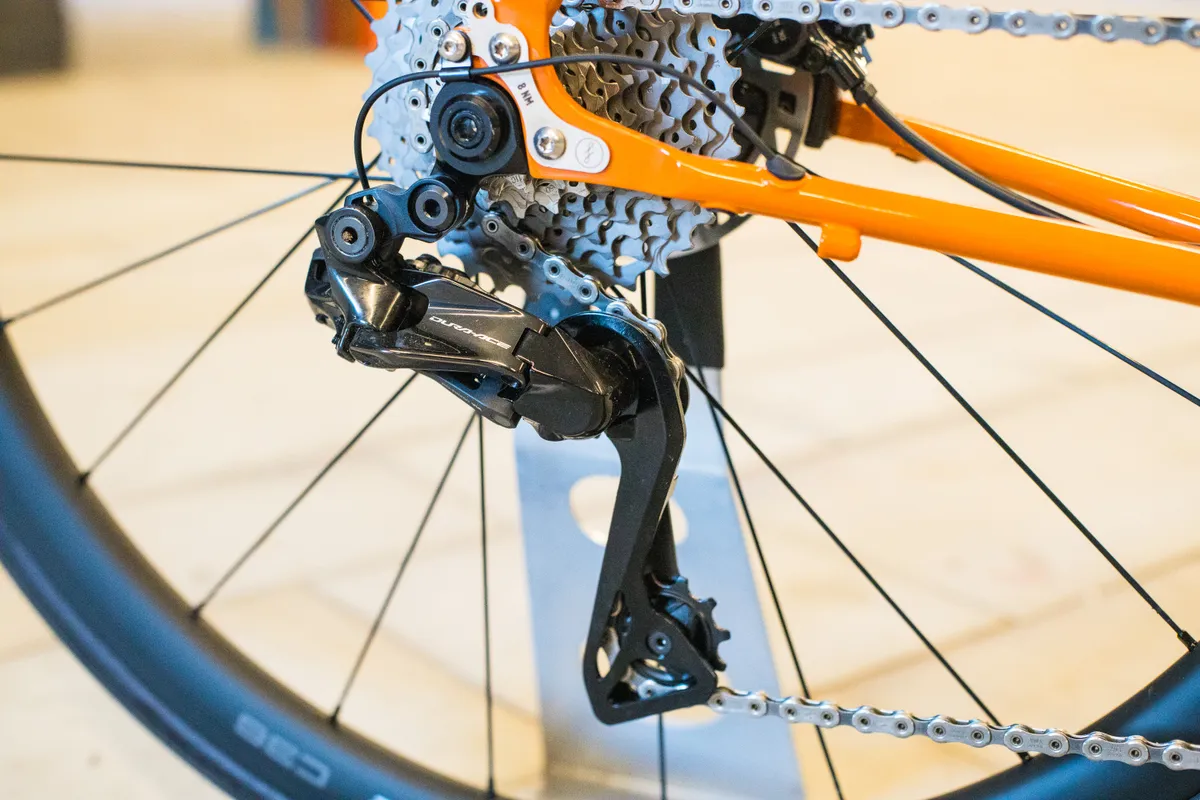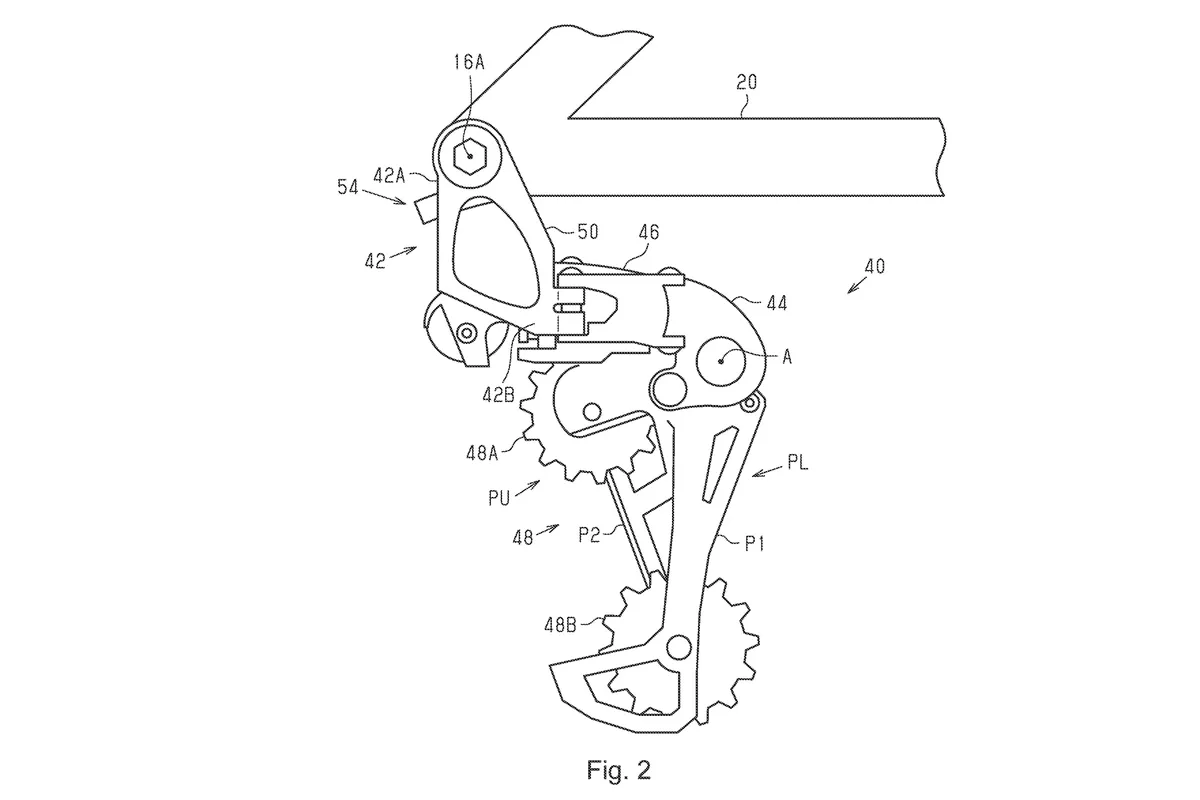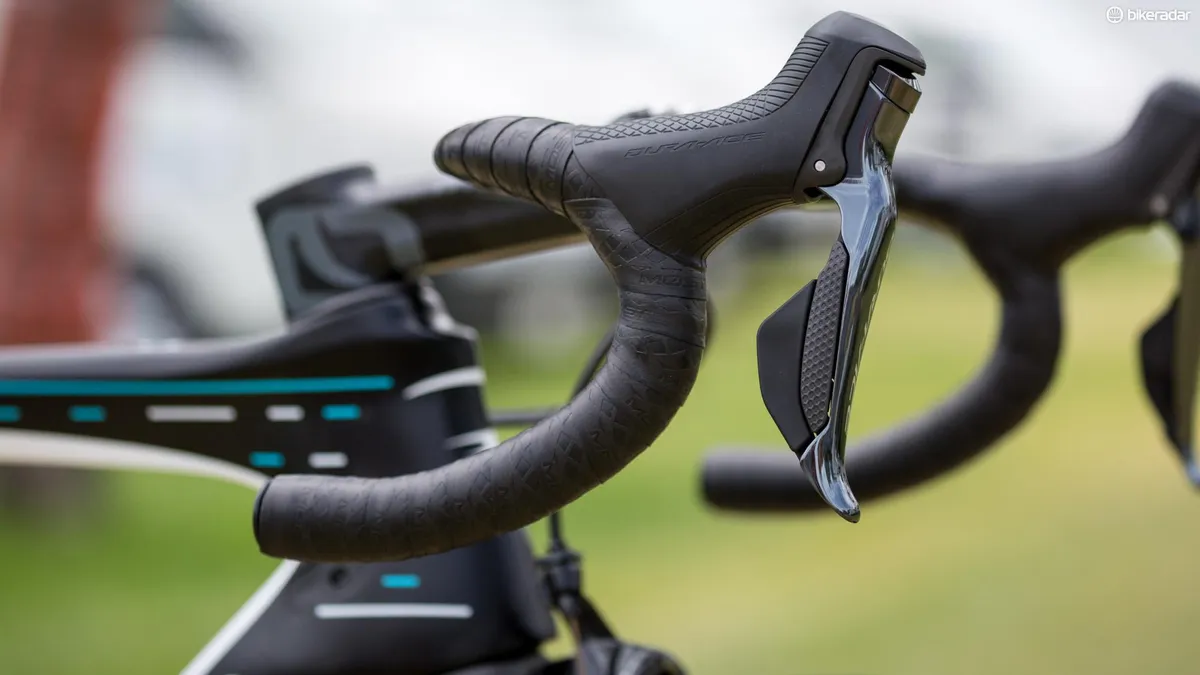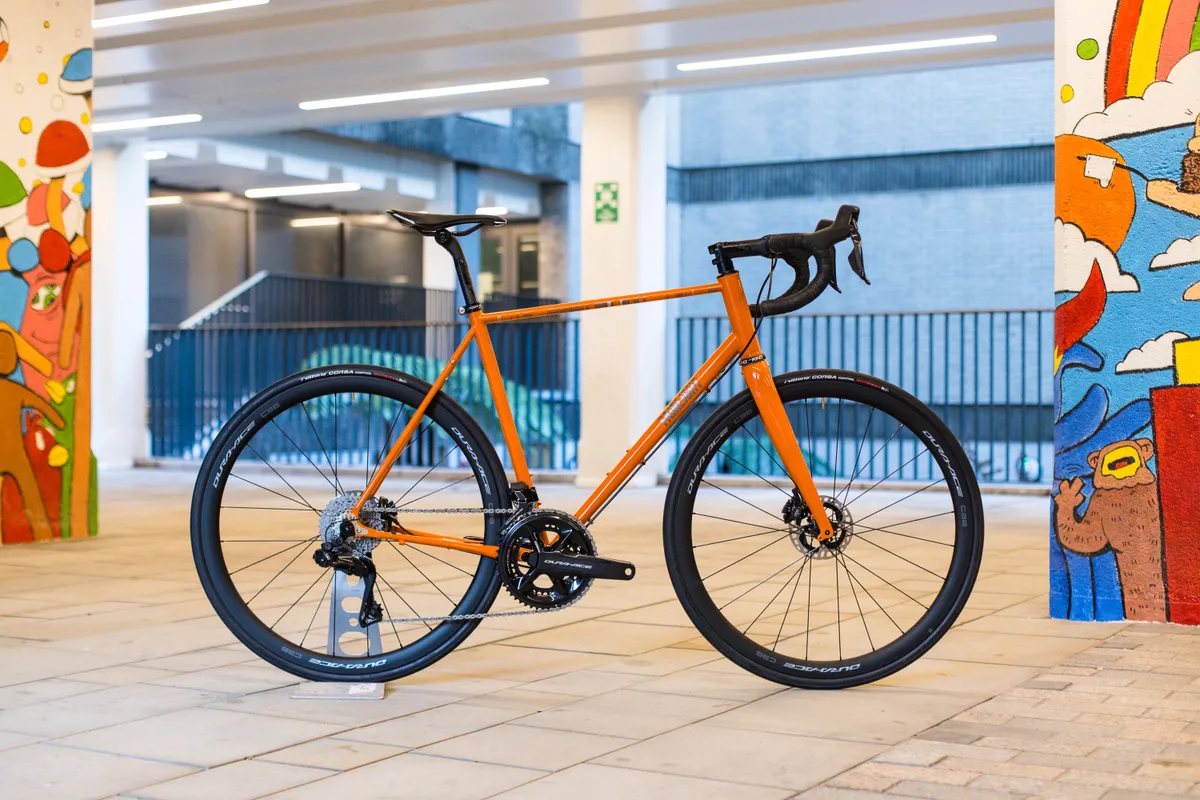Shimano launched its first fully wireless electronic groupsets earlier this year, with options across mountain biking and gravel.
Historically, Shimano’s Di2 groupsets have shared technologies across disciplines, but fully wireless electronic groupsets for road bikes are conspicuous by their absence.
New tech is almost always introduced at the top tier of Shimano's range, trickling down to cheaper groupsets as they're released. That means the (inevitable) release of a wireless road bike groupset will start with Dura-Ace, Shimano's flagship road groupset.
Assuming Shimano follows its usual four-year product cycle, Dura-Ace is almost due for an update, with R9200 released in August 2021.
So with that in mind, I wondered what GRX Di2 RX827 and XTR Di2 M9200 could tell us about the next generation of Shimano Dura-Ace Di2 R9300.
Dura-Ace Di2 R9300 will be fully wireless

Dura-Ace Di2 R9200 features slim, semi-wireless derailleurs and the convenience of just a single battery to charge.
However, the direction of travel for the bike industry – and most other technologies – is clearly towards fully wireless electronic components.
Given Shimano’s new wireless gravel and mountain bike rear derailleurs are compatible with Shimano’s existing 12-speed Di2 road shifters, I expect to see Shimano implement the same protocol and batteries on any new Dura-Ace Di2 R9300 derailleurs.

As with Shimano’s GRX and XTR Di2 derailleurs, I hope there’ll be full cross-compatibility between road, gravel and MTB parts, enabling riders to spec bikes as they choose.
As Apple CEO, Tim Cook, occasionally says, it’s often better to be the best at something rather than the first, especially when it comes to tech.
That will be a tall order for Shimano, though, given Campagnolo and SRAM are now on their second and third generations of fully wireless electronic road groupsets, respectively, in the form of Super Record 13 and Red AXS.
The Dura-Ace Di2 R9300 rear derailleur won’t adopt UDH

One notable omission from Shimano’s new XTR and GRX Di2 groupsets was a direct-mount rear derailleur that takes full advantage of the Universal Derailleur Hanger (UDH) standard.
UDH attempts to simplify the way rear derailleurs fit bikes, allowing for a single – universal – hanger design for all UDH-compatible frames.
The standard has gained enormous traction and is now common across bikes of all types.
A noble aim, perhaps, but also a blinder by SRAM as its adoption paved the way for its direct mount derailleurs, starting with the launch of T-Type Eagle Transmission followed by Red XPLR AXS groupsets.
So why won’t Shimano jump on this trend? Because it’s a SRAM thing.
What we may see instead is a similar bit of tech that works with UHD-compatible frames, but isn’t actually UDH.

A patent unearthed in March 2023 showed Shimano is working on a direct-mount rear derailleur design, which removes the need for a separate hanger – just like SRAM’s T-Type and XPLR AXS rear derailleurs.
The difference could be that Shimano’s design allows for the use of different cassette sizes, thanks to the inclusion of a ‘B-gap’ or ‘B-tension’ screw.
In contrast, SRAM’s direct-mount rear mechs use fixed cassette sizes.
All that said, given the patent images show a MTB-style rear derailleur, as well as a mountain bike, it’s possible Shimano simply sticks to its current Direct-Mount Rear Derailleur (DRD) standard instead.
Though not a ‘direct-mount’ in the same style as SRAM’s UDH-compatible derailleurs, Shimano’s DRD standard allows the use of stronger hangers with fewer parts, while retaining compatibility with traditional-style hangers and frames.
Dura-Ace Di2 R9300 will be 13-speed

This point isn't inspired by new wireless GRX or XTR Di2, but by Campagnolo, SRAM – and now Rotor – all producing 13-speed wireless electronic groupsets in various guises, I've got to assume Shimano won’t want to be left behind in the tech arms race.
This theory is bolstered by another Shimano patent spotted last year for a 2x 13-speed wireless electronic groupset.
On paper, this would mean Dura-Ace Di2 R9300 parts aren’t backwards-compatible with Shimano’s existing ecosystem of 12-speed cassettes and chainrings (and possibly much else), but there’s precedent for that.

When Shimano jumped from 10- to 11-speed, and then from 11- to 12-speed, the new electronic components weren’t backwards compatible with the old ones, for example.
(Side note: the EW-AD305 wiring harness adapter enables riders to use 11-speed Shimano TT shifters with 12-speed components, showing it is possible, but firmware hasn't been updated on other components from that era.)
On the other hand, Rotor's new Uno wireless electronic groupset offers the ability to programme the shifters and rear derailleur to work with 10- to 13-speed cassettes.
This means riders needn’t upgrade every component on their bike, and could purchase a new rear derailleur and shifter to upgrade to some of the latest parts.
With this increased competition for riders’ hard-earned cash in mind, perhaps Shimano will do something similarly rider-friendly and offer this capability as an option via its E-Tube Project app.
Dura-Ace Di2 R9300 will be 2x, but could have a 1x option

1x for road bikes has its fair share of proponents and critics, but Shimano remains philosophically wedded to 2x on the road – and I don’t see that changing any time soon.
The above patent specifically references a new wireless front derailleur, so 2x-compatibility seems a certainty.
What’s more interesting to consider is whether Shimano will make 1x a legitimate option for riders with its next-generation road groupsets, as its key rivals are doing.
Though Campagnolo launched Super Record 13 as a 2x13-speed road groupset, it’s already revealed three additional 1x versions are also in the works – to cover road, time trial and gravel applications.
SRAM likewise allows riders to mix and match components within its AXS ecosystem, meaning riders can choose between 1x and 2x across most disciplines.

In contrast, Shimano-sponsored WorldTour teams tend to reserve 1x road groupsets for time trials, as the Japanese giant doesn’t officially support their use with its road-specific rear mechs.
But with Campagnolo and SRAM offering riders so many more options, might Shimano renege on its principles and follow suit?
If so, perhaps we could see Mathieu van der Poel storming across the cobbles of the Ronde van Vlaanderen with a gravel-inspired Shimano setup similar to Mads Pedersen’s Trek Madone SLR with SRAM Red XPLR AXS.
Or Tadej Pogačar copying the 1x setup Jonas Vingegaard’s prefers on his Cervélo S5 aero bike.
Dura-Ace Di2 R9300 cassettes will start with a 10t sprocket

If Shimano is to offer the next Dura-Ace in 1x-specific setups, then cassettes starting with a 10t sprocket seem essential.
This is because 10t sprockets enable cassettes to have a greater range without needing to use larger, heavier chainrings and sprockets.
The brand wouldn't even need a new freehub design to implement this, as it could use its existing Micro Spline standard.
Alternatively, might a 10t sprocket squeeze onto its HG L2 freehub (which launched with Dura-Ace R9200)? Although Shimano says no, officially, the lack of splines towards the end of the freehub body suggests there could be room for it.

Shimano has found ways to make things like this work previously, too. Micro Spline, for example, was initially said to work only with 10t sprockets or larger, but XTR Di2 M9200 saw the launch of a 9-45t Micro Spline cassette which fits using a special lockring.
Shimano resisted this move with the 2x-only Dura-Ace Di2 R9200, citing the improved mechanical efficiency of 11t sprockets compared to 10t ones.
Campagnolo, however, made what looks to be a smart move with Super Record 13 by offering cassettes starting with both 11 and 10t sprockets, as well as seven different chainring combinations, giving riders plenty of choice.
After initially only offering smaller chainring combinations when its Red AXS HRD groupset launched in 2019, SRAM likewise now offers larger sizes to satisfy riders concerned with drivetrain efficiency.
In contrast, Shimano has been streamlining its groupset offerings in recent years – cutting down on the number of chainring and cassette options available. A move back towards greater customisation would therefore help keep it competitive in this regard.

This subject is complicated by the UCI’s upcoming gearing restrictions trial in October, which could see combinations larger than 49x10t banned in UCI-sanctioned mass start road races.
Such a limit would make cassettes with 10t sprockets far less attractive, as a 49x10t top gear would – all else being equal – give up some drivetrain efficiency compared to an equivalent 54x11t combination.
Given the existence of a potential trial was first reported on by Escape Collective's Ronan Mc Laughlin in March, before being confirmed by Daniel Benson in June, it appears groupset manufacturers may not have been given much advance warning or time to adapt.
SRAM’s recent statement announcing legal action against the proposed trial claims the UCI “declined to engage in meaningful dialogue" about the proposed rule, for example.
This matters because Shimano has almost certainly been planning its next-generation Dura-Ace groupset for years already, and may have already settled on key decisions like this.
When will Shimano Dura-Ace Di2 R9300 launch?

It’s been a little more than four years since Shimano launched its current Dura-Ace Di2 R9200 groupset in August 2021.
That arrived around four years after Dura-Ace Di2 R9100, which launched around four and a half years after Dura-Ace Di2 R9000.
If Shimano is sticking to its usual timelines, then R9300 could therefore be just around the corner.
I'll certainly be keeping an eye on winter training camps and WorldTour races next season to see whether we can spot any prototypes being trialled.
We first spotted the latest SRAM Red AXS shifters at a Movistar Team training camp in November 2023, after all, while Dura-Ace Di2 R9200 originally broke cover at the Baloise Belgium Tour in June 2021, prior to its official launch.
It’s worth remembering, however, that the bike industry went through a turbulent period during and following the COVID pandemic, while Shimano has also been dealing with the fallout from its global crankset recall over the previous few years.
Things have started looking up for the Japanese behemoth in recent months, as it reported a 15.6 per cent increase in bicycle component sales in the first quarter of 2025.
But considering XTR Di2 M9200 took seven years to arrive, we might have to wait a little longer to see Dura-Ace Di2 R9300 if Shimano’s plans have been delayed by external factors, or if it simply wants to sell through more of its current generation stock.

